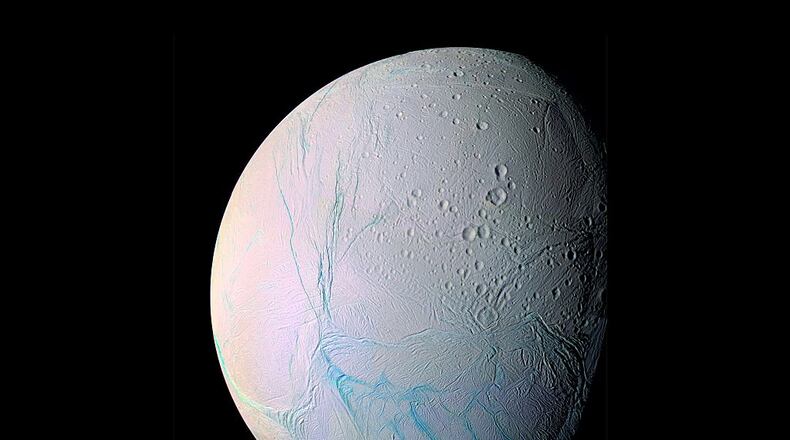One of Saturn’s small, white moons has the perfect conditions for life in its icy crust-covered ocean.
The Cassini spacecraft, in a fly-by of the moon Enceladus, discovered some of the building blocks for life in plumes of vapor and particles erupting through cracks in the moon's crust, according to a report from Cassini mission researchers in the journal "Science."
The vapor or gas contains hydrogen, one of the essential components of life.
"A form of chemical energy that life can feed on appears to exist on Saturn's moon Enceladus," a NASA spokesperson said in a news release.
Space agency scientists believe there could be microbial life around hot spots in the moon’s ocean, just like on Earth, where hydrothermal chemical reactions occur deep in the ocean when cold water interacts with molten rocks.
Life on Earth needs three main ingredients to exist and flourish: liquid water, a source of energy for metabolism and the right chemicals, primarily carbon, hydrogen, nitrogen, oxygen, phosphorus and sulfur.
“This is the closest we've come, so far, to identifying a place with some of the ingredients needed for a habitable environment,” NASA’s Thomas Zurbuchen said.
”These results demonstrate the interconnected nature of NASA's science missions that are getting us closer to answering whether we are indeed alone or not.”
In addition, Hubble Space Telescope researchers reported in The Astrophysical Journal Letters that they’ve spotted the same vapor jets erupting from Jupiter’s large, icy moon Europa, which also has a liquid ocean beneath its icy crust.
About the Author


